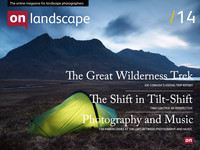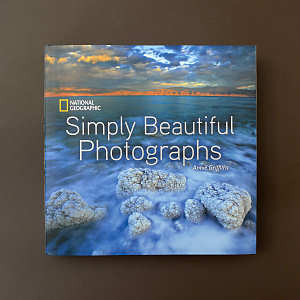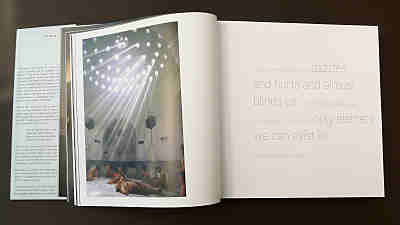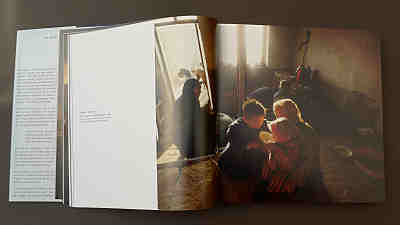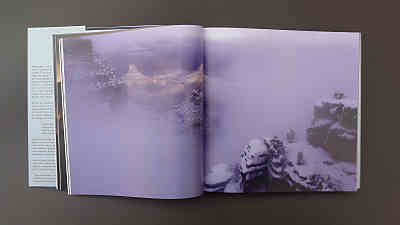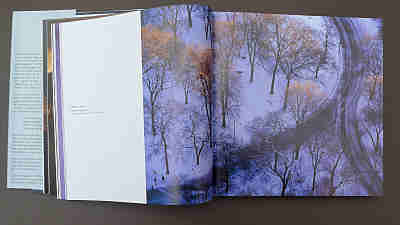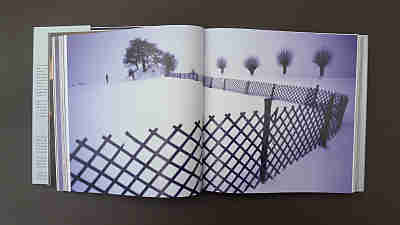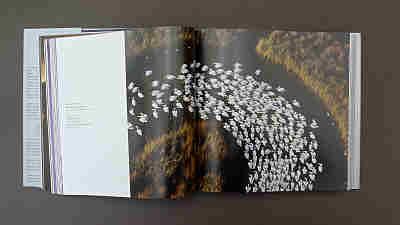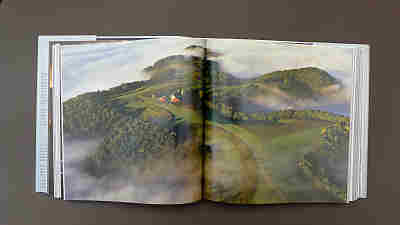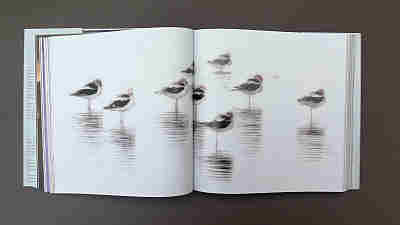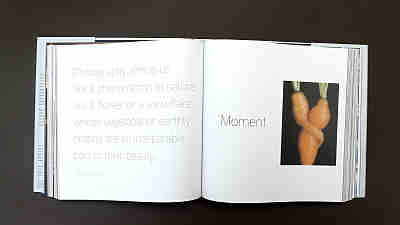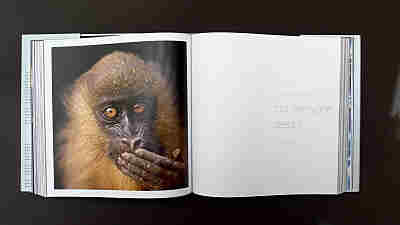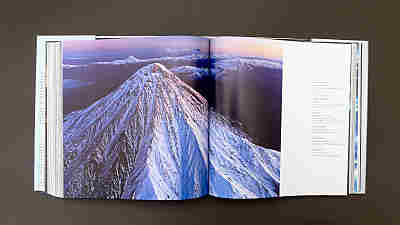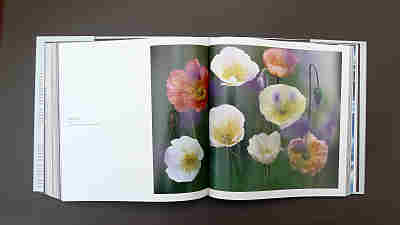Book Review

Adam Pierzchala
Now retired, I have more time to enjoy being out with my camera looking for scenes and subjects that pique my interest, especially coastal, woodland and close-ups. Although I still have several rolls of 35mm and MF film in my freezer, I shoot almost exclusively digital now
How does one review a hefty tome such as this? With over 500 pages of 250x250mm, this is a collection of some of the most memorable photographs taken by National Geographic photographers. The text is written by one such photographer, Annie Griffiths. Maura Mulvihill (Vice President at the NGS) in her Foreword, explains how they were trying to “find beauty” in photographs but without full agreement on what this means. As Confucius said: “Everything has beauty but not everyone sees it”
The result is an interesting mix of new and old images and perhaps these old ones have a muted appearance, with plenty of grain. But this gives the book a certain nostalgic appeal which re-awakened my childhood enjoyment of books from the 50s and 60s. This tome seems to be written by a photographer for those interested in photography and the division into chapters covering vital photographic factors works well: Light, Composition, Moment, Time, Palette, and Wonder. The book is peppered with quotations relating to Beauty and/or to photography. One that I particularly like is from Susan Sontag: To photograph is to confer importance.
So let’s look at the chapters, starting with Light. We read that “More than any other aspect in a photograph, it is light that makes us gasp. It says to us pay attention”. Well this is true in many cases, but for example some intimate landscapes work only because of flat non-directional light which takes an invisible role, letting the subject speak for itself. But a good wide ranging discussion about light follows and Annie Griffiths considers some of the excellent images with particular reference to light, which so often is strongly directional as in this Turkish bath scene.
I particularly like one of a group of children taken indoors in Mongolia. This breaks all the rules with bright patches at the edge of the frame, burnt out highlights, some faces being barely visible and dodgy focus (or lack of sharpness). But boy the atmosphere is so 3-dimensional!
There is a fabulous winter scene of the Grand Canyon, with a large area of nothing (fog/cloud) but a very balanced composition and wonderful contrast in colours. This works for me on several planes including Light, Moment, Composition and Palette.
A photo of Central park New York in the snow with low sunlight just catching the tops of the trees. Wonderful colour again, but the image is “made” by two tiny figures in the extreme bottom left corner. What mystery – who are they, why are they there on this obviously very cold day? And another image this time of some trellis fence leading to a burial mound. Here again the photographer chose to include figures and my eye went straight to them. The strong leading curve of the fence is almost irrelevant – the tiny figures still dominate. I’ll end this section with a quote from Aaron Rose: “In the right light, at the right time, everything is extraordinary”.
Composition: As Annie writes, “Composition is nothing more than an arrangement of elements within a chosen frame”. This simple truth hides that the photographers have to choose the elements and the frame – a very complex task indeed! A discussion about composition follows, with consideration given to the golden mean and how it can be found across the world in many different cultures; some thoughts about Cartier-Bresson, and an introduction to the role that geometric patterns play in creating well-composed photographs.
Ms Griffiths repeats the mantra that a photographer’s goal is to include only the elements which matter and exclude any distractions. The text ends with the statement that “we are moved by the geometry of perfection” though I am not quite sure how this sits with an earlier statement that “…each [compositional] element is most effective not when it captures perfection but rather when it reveals the imperfect”. The bulk of photos which illustrate Composition seem to be in the Travel genre featuring people or their influence, e.g. buildings and other structures.
Having said that, among the ones I like is Jim Brandbur’s shot of avocets sleeping, beautifully arranged in strong diagonals. Except one bird on the left, which is looking straight into the lens. Perhaps that is the one “imperfect” element among the geometric alignment?
Moment:
Griffiths asks us to quickly recall three photos we will never forget. I inadvertently read on (she gives some examples) but then went back to the exercise. I remembered one image on my own, and one other which was prompted by her examples. But there was no third, instead a flow of many both old and new. Try it and see what you come up with! Most of the images to illustrate Moment involve people but there are also some delightful shots of animals with almost human expressions (e.g. Joel Sartore’s drill monkey).
But not one landscape photo – why? Is it because the landscape photographer’s moment tends to last at least a few seconds, sometimes several minutes or far longer in stable light, whereas human and animal moments can exist for just a fraction of a second? Earlier in the book Griffiths does acknowledge that photographers go to extraordinary lengths to capture the right light, but that is not in relation to Moment.
Time: This section is all about how photography extends our vision capturing motion with either very short or rather long shutter speeds. She discusses how most photographers leave the camera set to auto and so miss the creativity of varying the shutter. She also discusses how freezing motion was made possible with higher ISO film and now with very sensitive digital sensors the possibilities of shooting almost in the dark. One of the astonishing photos in this section is by Joe Petersburger of a kingfisher meeting its reflection just as it enters very still water. The beak has already broken the surface but no ripples have yet formed. Just wonderful. There is also John Burcham’s superb photo of wind-blown tumbleweed in mid-air against the backdrop of the Bonneville Salt Flats. But.. well, read on to the last section on Wonder.
Palette: Colour, whether highly varied and garish or subdued and monochromatic: “Together with light” Griffiths writes, “palette is the most important element in setting the mood of a photograph”. She uses the analogy of music in discussing discordant and harmonious hues; she mentions Ernst Haas finding beauty in the mundane (the colour of peeling paint) and alludes to us all discovering colour on film or sensor which we wouldn’t normally see with our own eyes – such as the saturation of purple in shadows or the “bruising colour in a stormy sky”. Dramatic stuff and true. There is a good number of landscape images in this section alongside some Travel and Wildlife shots. There is even one fine b&w image of a vaquero cowboy by Rob Kendrick , alongside this quote from Murasaki Shikibu: “Beauty without colour seems somehow to belong to another world”. Two images, very different to each other, stand out for me: one shows the stark brutal beauty of nature’s forces (Micahel Melford’s image of the Kronotsky Volcano, Kamchatka),
the other is Jan Vermeer’s delightful study of Icelandic Poppies, showing a much softer and vulnerable side of the beauty around us.
Wonder: This last section considers how “the craziest and most curious photographers on Earth are those who seek wonder”. Griffiths goes on to describe how such photographers suffer to capture the wondrous, the dangers they are exposed to (volcanoes, swimming with sharks….) or how scientific curiosity has only been heightened with the development of high tech imaging equipment. Photographs of the wondrous “.. lift us out of a jaded world and make us gasp.” Wow! Isn’t this what we all strive to achieve in our images? We want to show the beauty and wonder that we have discovered in our own photographic journey! Yet the author also raises the slightly disturbing point that viewers have become so accustomed to digital manipulation that they now question the truly wondrous. This made me go back to the tumbleweed photo in mid-air. Was it photoshopped in? Did an assistant throw it into the air? Is it lit by flash? Perhaps it does look a bit too good to be true…. Thankfully, according to Annie Griffiths, most genuinely curious photographers disdain manipulation and falsification and really do record the truly wondrous. The images in this section are a celebration of Nature in the grandest sense, from natural phenomena to beautiful landscapes to the wonders of wildlife at macro and micro levels.
It isn’t possible to do justice to such a large collection of photos in this review. The text is generally a good read even if we have come across many of the thoughts in other books. The images mostly speak for themselves – inspiring photography from masters in their genres. Let me end this review with this powerful quote:
"When we look at a photo, we are looking at something that no longer exists"

